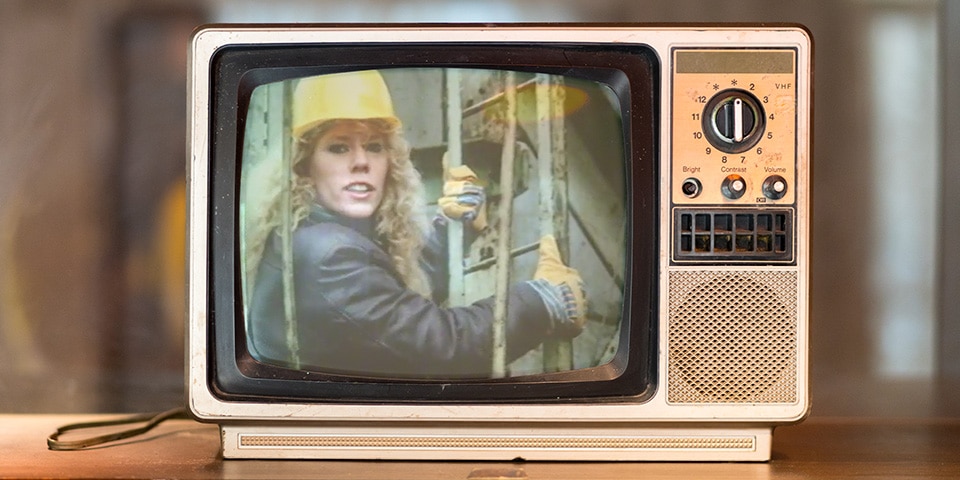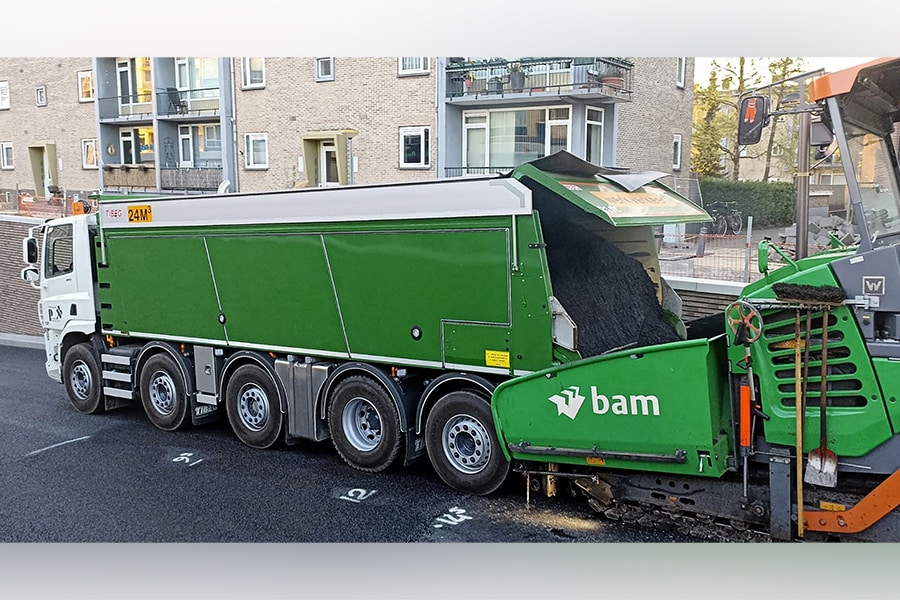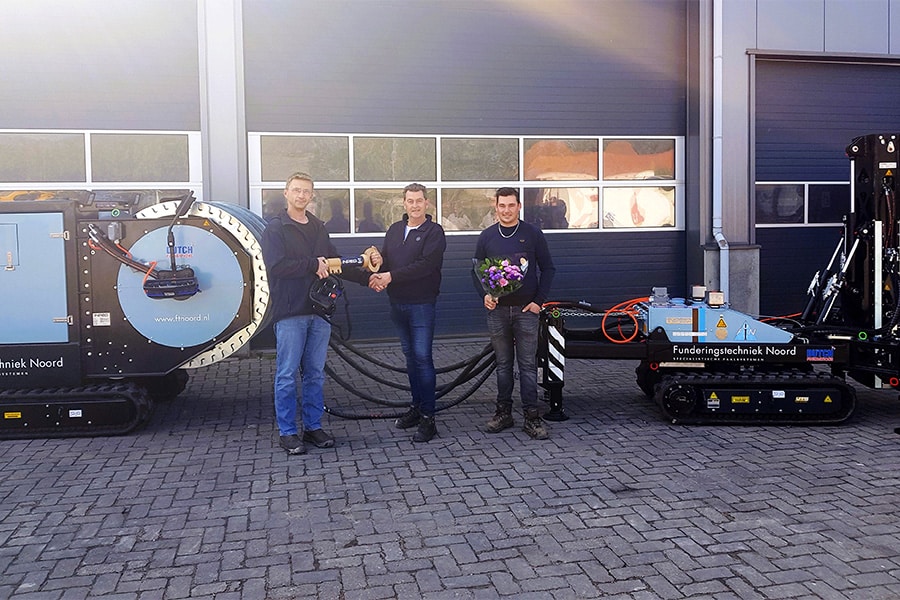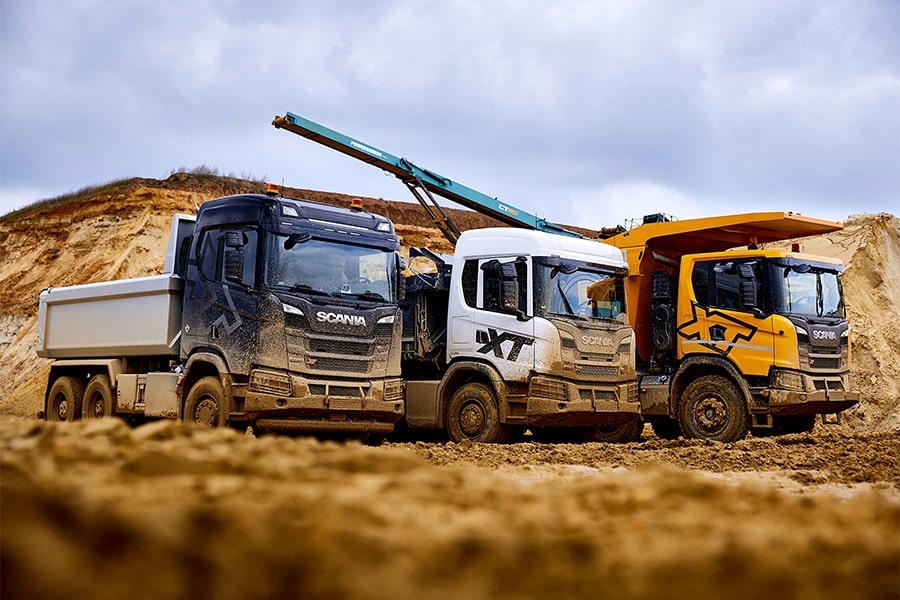
"Yo, you don't let a chick like that get hoisted, do you?"
In 1981, through this campaign, the government tried to motivate more women to choose men's occupations. Apparently, this was necessary, since women were severely underrepresented in technical education and technical occupations in the 1980s.
Almost 40 years later
We are almost living in 2020. Almost 40 years ago, the above Postbus 51 advertisement passed by, 39 years ago to be exact. Those who do not know better might think that in 40 years society has changed, or rather, evolved socially, to such an extent that we could at least speak of 40% women in construction and 60% men. Nothing could be further from the truth, however. Figures show that very little has changed.
The Gender Equal Treatment Act, on which advertising was hung in 1981, says that Employers may not discriminate between women and men in equivalent employment. This is stipulated in Article 141 of the EC Treaty and in the Netherlands in the General Equal Treatment Act (AWGB). This AWGB contains general rules to protect against discrimination. The prohibition of gender discrimination is further elaborated in the Gender Equality Act and Section 7:646 of the Civil Code. The law is visibly applied regarding conditions of employment, with pay being the main issue. Basic wages, overtime bonuses, vacation pay, etc. may not be subject to discrimination where men and women are concerned. Yet construction, in our case the infrastructure sector, apparently does not (yet) beckon hard enough.
YouTube is a great source of old advertising clips. For example, in a 1981 STER commercial break, I came across a Postbus 51 commercial that goes as follows:

The 1981 Postbus 51 advertisement.
Image: Woman wearing construction helmet climbs into a crane
Male voice: "Yo, you don't let a chick like that get hoisted, do you?"
Construction worker, looks back from stairs: "Oh no?"
Male voice-over: "With the same education, women can also do the same work as men. And just as well. That's why there is the law on equal treatment for men and women. Would you like to know more about this in connection with your work or job application? Then ask for the leaflet. Write to 'Man Woman', PO Box 51, The Hague."
Image during voice-over: Crane operator hoists concrete slab into construction pit, where a female colleague wearing a helmet pushes the concrete slab to the right spot. Once in place, the construction worker leaves the crane cab."
Construction worker, from the stairs: "So, that was that!"
They are coming!
The construction industry, including infra, does not make a good impression when it comes to the proportion of women employed there. Especially when compared to other sectors. For years there has been a female share of "manpower" of around 10%. Yet the number of women in vocational training is steadily increasing. Maxim Verhagen, president of Bouwend Nederland, says that now half of construction engineering students at universities and one-third of civil engineering students are women. That promises to be an improvement when these students finish their studies and start entering, vacancies are plentiful after all. The big question, however, is: is the industry itself ready and prepared enough to accept a greater influx of women?
Still a men's culture, but the wind is slowly turning
If you read GWW Magazine regularly, it cannot have gone unnoticed that a different wind is blowing through the industry. Top women in construction are exerting a positive influence on women about to make career choices. "The soft hand" has come into play: more consultation, more respect, more mediation and better communication. Instead of facing each other like bantams in a rock-hard man's world, there is soft steering toward more social behavior. And that within the entire construction column. It is not just women in top positions who are currently making a vital difference in this. It seems that men, too, are fed up with the old culture and long for more social interaction.
"Work must above all become fun again, respect for each other must prevail and we must work together more," is the motto of the brave innovators. There is plenty to read about that in various articles in this Yearbook and in the GWW editions of the past year. Are all these declarations of intent to change the wind a casual convergence of opinions? Absolutely not. The industry is tilting, and you know what that means: to tilt with it is to survive. However, the pain of change is negligible compared to the opportunities it creates. Therefore, you might want to look around your company today to see if you are set up for 50% male employees and 50% female employees. Because that's what we're going for, right?



